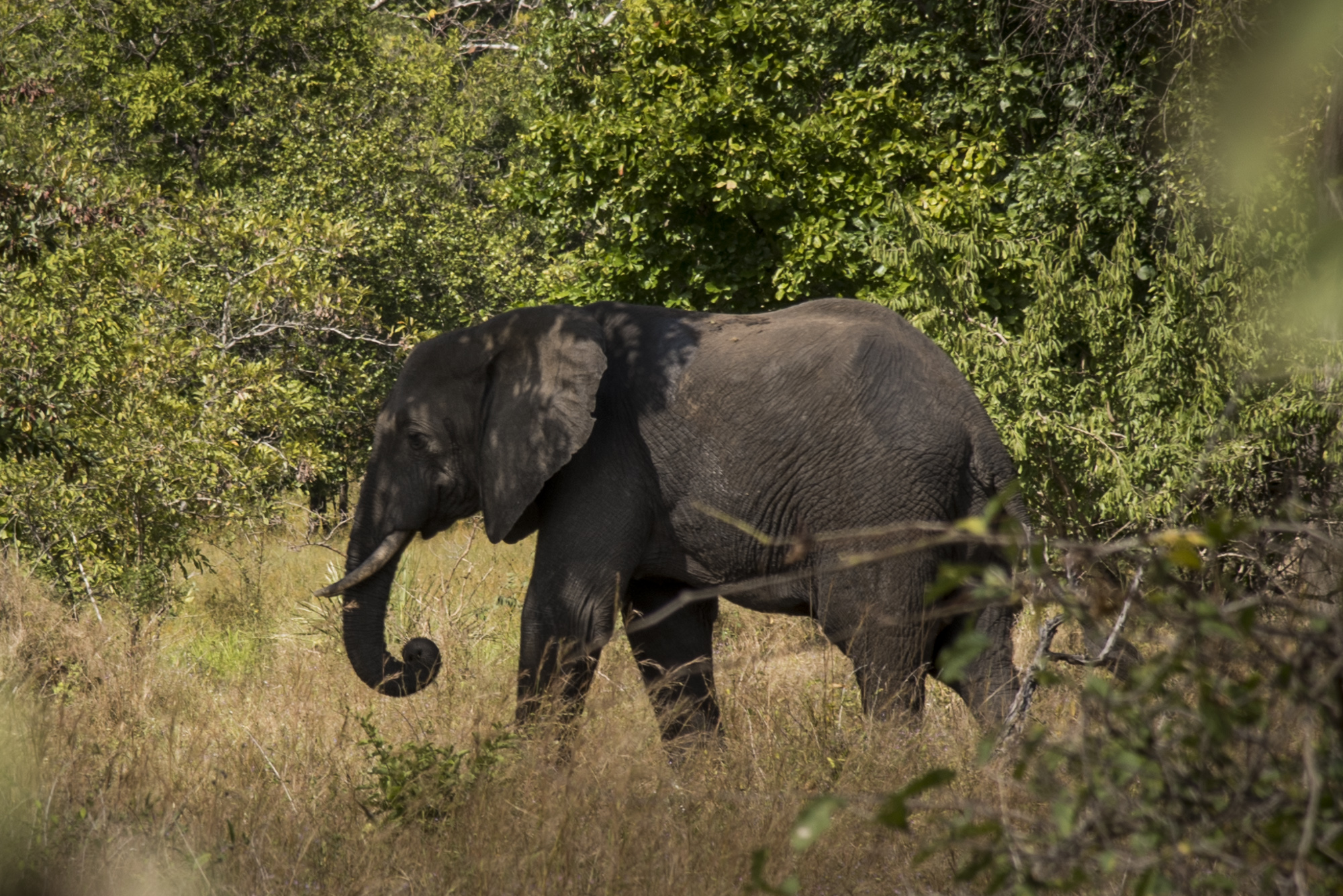Conservation Challenges
The majority of threats to NSR’s biodiversity stem from a combination of unmanaged human development, and uncontrolled and unmanaged use of natural resources. There are an estimated 40,000 human inhabitants living in NSR, mostly dependent on natural resources from the Reserve for their livelihoods – agricultural land, water, soil, timber, non-timber forest products, fish, bushmeat, and (currently to an insufficient extent) some tourism based revenues. This exploitation, both legal and illegal, is currently unsustainable for most resources, and is the cause of most of the key threats to NSR’s biodiversity.
These threats include artisanal mining, targeted poaching of high value species (e.g. ivory poaching, lion posioning), illegal logging of high value timber species, increasing land clearing for agriculture, fishing, timber felling for household use, expanding settlements, snaring for bush-meat – including catching carnivores as by-catch, unmanaged fire, retaliatory killing of both lions and elephants (largely driven by human-wildlife conflict), and veterinary disease. The local drivers of most of these threats are poor delivery of public services and development benefits to local communities, and weak governance – including law enforcement and PA management.
There are four current major threats to NSR’s biodiversity which are largely driven by external factors, i) poaching of elephants for ivory, ii) poisoning of large carnivores and vultures for body parts, iii) artisanal mining, and iv) the extraction of hardwood timber for commercial use. The main drivers for these threats are external markets, mostly in East Asia, however poor governance and weak law enforcement are the local drivers that allow these illegal activities to thrive in northern Mozambique.
Niassa Special Reserve has become synonymous with the recent elephant-poaching crisis, and within the reserve, elephants have declined by 70% between 2009 until 2015 (from ~15,000 to ~4,400 animals). These activities have helped to strengthen local criminal networks, and entrenched corruption amongst many local government authorities – particularly those involved in law enforcement. More recently, artisanal mining has flourished in NSR, leading to land degradation, polluting of rivers, bushmeat extraction, expanding criminal networks, and a negative social impact on local communities. Poisoning for lions and vultures has also emerged as a threat, putting at risk human and wildlife health, and indiscriminately killing many other species in addition to those targeted, in a way that is far more cruel and brutal than hunting.

@Frank af Petersens
The long-term threat to NSR is the possible consequences of the increasing human population in northern Mozambique. The human population growth rate is >3%, with ~56% of the population 19yrs or younger. The lack of economic opportunity for these people, and their continued dependence on natural resource extraction – in an area characterised by poor governance and corruption – must be addressed.